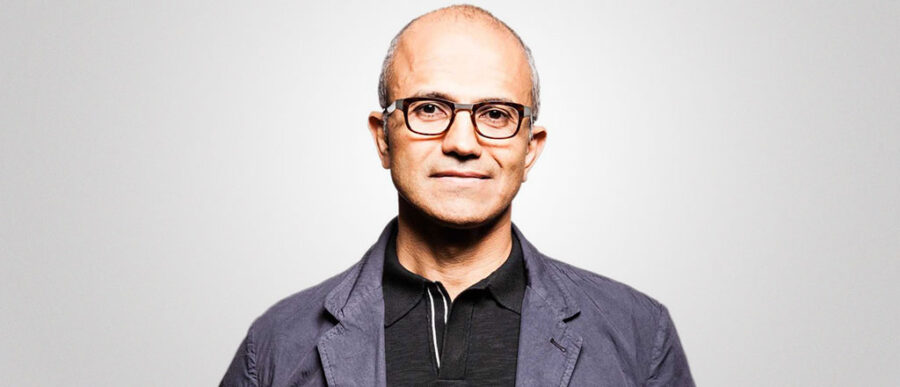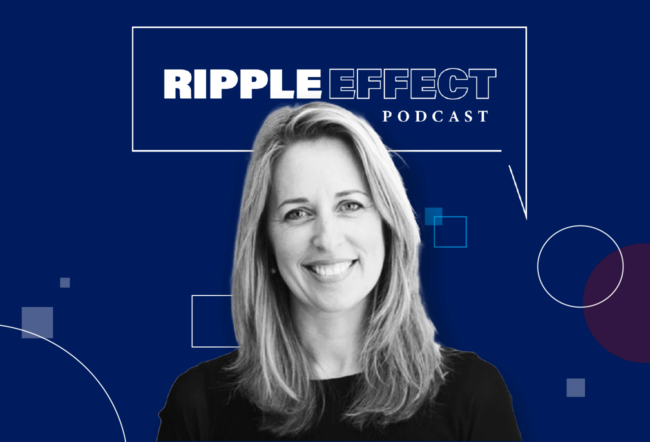Satya Nadella’s ascension on February 4 as Microsoft’s new CEO has been one of the most widely watched reshuffles of corporate leadership in recent memory. Along with Nadella’s appointment, the company announced that Microsoft founder Bill Gates will assume the role of technology advisor while passing on the chairman’s job to lead director John Thompson. Forty-seven-year-old Nadella, a native of Hyderabad, India, has worked 22 years at the company, most recently as executive vice president of its cloud and enterprise group. A Microsoft search committee picked him after considering several other high-profile heads of other companies over five months. Nadella replaces Steve Ballmer, who has been CEO since 2000 but announced his intention to leave last August.
Michael Useem, Wharton management professor and director of the school’s Center for Leadership and Change Management, highlights what he considers the biggest leadership insight from the Nadella appointment: “Unequivocally, the enormous interest in who is going to run Microsoft is indicative of how much of an impact one great CEO, or conversely a not-great CEO, can have on the fortunes of the company. Leadership, and how much difference it makes, is the vital point here.”
According to Useem, the attention being paid to Nadella’s appointment shows an awareness “that if Microsoft gets the right person into the corner office, it may continue to accelerate, survive and compete against the likes of Google, Oracle and Apple and so on. With the wrong person in the corner office, the company could end up in the place BlackBerry and a few other firms have ended up.”
Useem notes that the CEO of a company like Microsoft must be a “strategic fit,” and one who is more than just “a great athlete.” First, that person must be articulate, insightful and able to execute strategy, he states. Second, he or she must also bring skills that address what the company sees as its biggest challenges in the next few years. In naming Nadella as CEO alongside Gates as technology advisor, Microsoft has made its main opportunities and challenges clear.
“By inference, Microsoft has decided that technology is its biggest single challenge, and thus Nadella seems to be the person who fits strategically with that great conundrum,” says Useem. The problem is “how to get the right technology to beat some very tough competitors.”
As CEO, Nadella will run a company with revenues trending at $83 billion annually, a cash pile of another $83 billion, a market capitalization of $300 billion and nearly 100,000 employees. But he also inherits a critical problem: While Microsoft powers 90% of PCs worldwide, analysts indicate that computer purchases are dropping rapidly because of increased smartphone and tablet use. Research firm Gartner reported in January that worldwide PC shipments saw their “worst decline in PC market history” in 2013 at 316 million units, falling 10% from shipments in 2012. And although Microsoft was an early innovator in smartphones, tablets and cloud services, it is now far behind Apple, Google and others in those areas.
“The enormous interest in who is going to run Microsoft is indicative of how much of an impact one great CEO, or conversely a not-great CEO, can have on the fortunes of the company.” –Michael Useem
According to Gartner, in the third quarter of 2013, Google’s Android had an 82% share in the smartphone operating system market, followed by Apple’s iOS at 12.1% and Microsoft’s Windows at 3.6%. BlackBerry, Bada and Symbian made up the remainder. Still, Microsoft had some reason to cheer: Microsoft-powered smartphones sold 8.9 million units during the quarter — 4.9 million units more than a year ago. “The winner of this quarter is Microsoft, which grew 123%,” noted Anshul Gupta, principal research analyst at Gartner.
Building a ‘Brain Trust’
Nadella’s top challenge will be dealing with former CEO Ballmer, who will remain on the company’s board, noted Dartmouth College management professor Sydney Finkelstein in a Wall Street Journal blog post. Useem agrees that this could be a challenge for Nadella, but adds that there are examples in which the situation can work — notably when the incoming CEO can decide if the outgoing CEO will remain on the board. When Meg Whitman joined eBay as CEO in 1998, she requested that founder Pierre Omidyar stay on as board chair, Useem recalls. “Whitman always said Omidyar was enormously helpful in protecting the soul of what eBay was all about.”
Useem praises Gates for stepping down as chairman and becoming a technology advisor, a move that would strengthen Nadella’s position. “By extension, it would be great to see Steve Ballmer consider the same thing” and exit the board, he says. “It would give Nadella a brain trust — two people who know a huge amount about the industry who can work with him, but don’t preside over him and don’t block what he may come up with.” He adds that Nadella may benefit from a reorganization Ballmer initiated last July to better use the company’s technological resources and improve internal collaboration.
Useem identifies bigger challenges for Nadella. One is to “pick up the reins and get everybody to work” toward the goals he sets. Two, he must get the company to focus on what its retail and business consumers want. Third, in a tactical sense, he has to learn how to work with the board and big investors, including activist investors. “He has done much of that but not at the level of the CEO,” Useem notes. Microsoft board member and activist investor G. Mason Morfit of ValueAct Capital welcomed Nadella in a statement, saying that he is “the best choice to lead the company.”
Nadella is well experienced in serving corporate customers, who account for two-thirds of Microsoft’s profits. Critics point to his relative inexperience in consumer markets for tablets and smartphones, where the company will need to grow. However, “most people who become CEO have not been CEO before,” Useem points out. The search committee members must have spent a lot of time asking themselves if Nadella is “a fast study and a quick student,” he says.
Inside vs. Outside
Many observers are asking if Microsoft should have brought in an outsider instead of promoting an insider. “The vital — though not-soon-to-be answered — question is whether Mr. Nadella brings the right leadership talents not only to run the show but also to grow the enterprise at the center of one of most turbulent and competitive frays on earth,” wrote Dennis Carey and Useem in a post on the Harvard Business Review blog network. “And that question is likely to be answered in the affirmative if the directors have managed to avoid the Peter Principle.” (Laurence J. Peter, who wrote a book by that name in 1969, argued that sometimes companies elevate executives who are successful in their current roles without considering if they have the requisite skills for the higher role.)
“[Microsoft] needs to change profoundly, and the best person might be someone from the outside who can look at the business with a fresh set of eyes.” –Ravi Venkatesan
According to Ravi Venkatesan, former chairman of Microsoft India, “[Microsoft] needs to change profoundly, and the best person might be someone from the outside who can look at the business with a fresh set of eyes.” However, while outsiders are “willing to look at sacred cows,” they also often end up clashing with other executives and the company’s culture. “This is why having a quintessential insider like Satya, who is also a quiet reformer, is likely the best choice.” He describes Nadella as “incredibly thoughtful, reflective, humble and very collaborative … critical qualities in a company that operates in very strong silos, and where divisions don’t collaborate very well.”
D. Shivakumar, chairman and CEO of PepsiCo’s India region, says that Microsoft has done well by placing the company in the hands of an engineer like Nadella. He notes that Nadella is “widely regarded in tech circles as the best cloud engineer.”
Microsoft has been successful in countries that enforce intellectual property rights, but not so in emerging markets because of piracy, Shivakumar adds. However, to win in the mobile business, technology companies have to succeed in China and India, which account for 40% of mobile subscribers worldwide, he points out.
Moorthy K. Uppaluri, CEO of human resources consulting firm Randstad India, who has worked with Nadella at Microsoft, believes Nadella is up to the task. “His combination of market orientation, customer and product centricity, culture-fit and [ability to be] ‘self-critical’ will help him to take Microsoft to the next realm.”
Think Succession
Even as Nadella is new on the job, Useem suggests that Microsoft should begin succession planning and groom new leaders. This makes sense “from a good governance standpoint” for two reasons, he says. One, health or personal factors may compel a CEO to vacate office. Second, Microsoft has several executives who are ready to become CEO, he notes. He advises Microsoft to launch a “classic GE-style leadership development” effort where it encourages a few handpicked executives to take relevant short-term courses on subjects like a CEO’s role and rotate them across various departments.
Meanwhile, Nadella will be closely scrutinized. “A frequent assertion is that a new CEO has 90 to 100 days to get his or her hands around the enterprise,” notes Useem. “It’s kind of a honeymoon period, but after three months, equity analysts, big investors, everybody on the board and certainly consumers will want to know what you are doing in the enterprise markets and the big consumer mass markets.”



